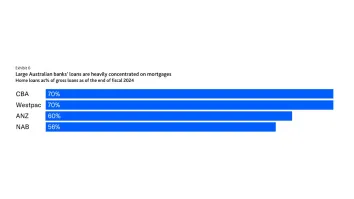
How are superapps changing the digital banking landscape?
In the future, a one-stop-shop may just be the way to go for bank customers.
Superapps are on the rise in Asia, with on-the-go customers enamoured with having a one-stop platform offering a digital wallet, retail shopping, transportation, and for giants such as China’s WeChat and Alipay, social media and messaging services.
“It is not unusual for a WeChat user in China to set up a date with a friend via instant messaging, make dinner reservations, book movie tickets, order a taxi and pay for every transaction along the way, all using one single app,” Andrew Huang, partner, financial services audit, KPMG in China, said in the KPMG report, “Super app or super disruption?”
In Southeast Asia, major tech firms are also scaling up with the goal of being a superapp. Singapore’s Grab and Indonesia’s Gojek lead the pack with their platforms featuring transport, food delivery, package delivery, and even financial services.
Asian Banking & Finance spoke with three experts to learn more about the superapp phenomenon, and how they are changing the digital banking landscape.
Samuel Tan
Analyst, Maybank Investment Banking Group
“Superapps are multi-vertical apps anchored by a strong mobile wallet, with more mature superapps transforming into platforms-as-a-service (PaaS) players by rolling out mini-app features for other developers to build apps within their eco-system. The wallet is often mandatory within their eco-system as the payment gateway, allowing them to earn commissions on economic activity that occur on their platform. Superapps are just one type of player in the mobile money space. Others include telco-led mobile wallets (e.g. LinkAja, Dash, mPay), digital native mobile wallets (e.g. FavePay, PayPal) and bank-led mobile wallets (e.g. Paylah!, K+). Early mobile money offerings led by telcos tried to emulate M-PESA as an SMS-based wallet, but with smartphones, most mobile money offerings now have moved to an app-centric model.
“Mobile money players usually take two offline business models: a payment network: being a dominant POS and bill-payment gateway; and a money transfer service or branchless banking model, usually through a network of cash-in/cash-out agents. The latter is more suitable for countries with good mobile penetration but poor banking penetration (e.g. GCash in Philippines), while the former is more suitable for countries with good banking penetration and mobile penetration (e.g mPay and True Money in Thailand). With a dominance in payments, some mobile money players look to establish full digital banks to gain the license needed to take deposits and offer loans, to leverage on their superior amount of data to offer credit to otherwise un-creditworthy customer segments, while cross-selling other financial products more effectively than traditional banks.
“Mature superapps can take it to another level by not just dominating both business models on the offline domain but also dominating the online domain through creating their own app ecosystem within their app the same way Apple and Google control their app stores on our mobile devices, making them truly omni-channel payment platforms.”
Safdar Khan
Division President, Southeast Asia, Mastercard
“Today, superapps are challenging existing mobile and banking players by being a one-stop solution for all consumer needs and demands, including payments. For a long time, superapps had limited options and control when integrating payments. However, with growing adoption of open banking and technologies that enabled their application, superapps are now exploring how to better embed financing options into non-traditional channels.
“Superapps are also bringing new opportunities to traditional and modern financial players. For banks, including digital banks, partnerships with superapps allows them to access remote consumers or consumer segments they are unable to serve. These partnerships also allow banks to experiment with innovative digital offerings without the up-front investment and any associated risks. Banks can also use these technology firms as a pool of specialized skills that they would find challenging and expensive to assemble on their own. We’re also seeing how critical superapps have been in creating avenues for financial and digital inclusion. For instance, superapps are able to successfully equip non-financial services companies with the capabilities and essential infrastructure needed to make money transfers.
“Even though superapps have proven to be at the forefront of consumer needs and experiences, they’ve yet to successfully navigate the regulatory frameworks successfully, especially when it comes to finance. This is only possible when superapps form partnerships with licensed financial institutions that can provide access to licensed data, resources, and network.
“The rising adoption of technologies such as quantum computing, blockchain, AI, and open banking will have a profound impact on the growth trajectory of superapps. At Mastercard, we have adopted a digital-first approach that helps us better interconnect players across multiple sectors, such as banks, fintechs, digital giants, and more. We’re also able to successfully roll-out solutions and technologies that allow different sectors capitalize on the opportunities that superapps will bring.”
JungKiu Choi
Managing Director & Partner, Boston Consulting Group
“SuperApp is a platform that aggregate all services and offerings consumers need in one single app. It’s designed to win the battle for app usage and user daily screentime when mobile users suffer from app fatigue and crave convenience at the same time. SuperApps have unfettered access to massive consumers and data, as well as the economic opportunities that emerge from that access.
“SuperApps and the ‘SuperApp’ concept are creating an impact to the digital banking landscape in many ways. Some SuperApps have built their own digital banking arm to better support its ecosystem strategy and most have proven successful. A number of challenger banks who started with single/small suite banking offerings are also harbouring the ambition to become a SuperApp, such as Tinkoff, Revolut, and Nubank.
“Traditional banks are responding to the SuperApp trend through ‘partnership’ or ‘self-build’ models, depending on their size and assets they possess – to either embed branded or white-labelled products/services into 3rd party SuperApps or launch proprietary SuperApps by integrating with other 3rd party solutions through API integrations.
“We expect to see further integration and consolidation among banks, FinTechs and other platform players to come up with quality SuperApp offerings, which customers can use for all their daily needs. Only those who possess strong technical capabilities (open banking and API), the right strategy (and deep pockets) will stay in the game.”



















 Advertise
Advertise










